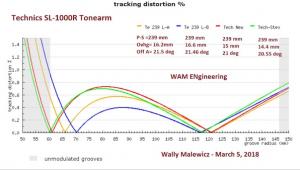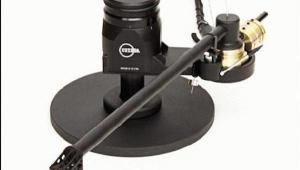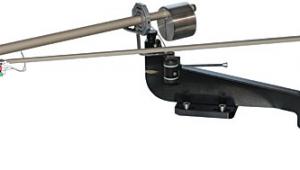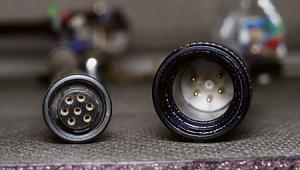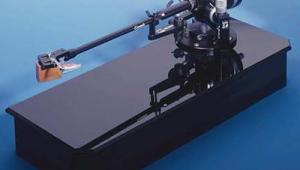Kuzma 4Point tonearm
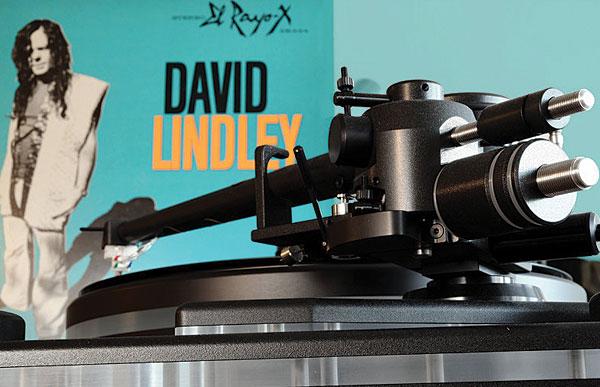
Whatever the design of a tonearm, there will be practical problems. The problem with gimbaled (fixed) bearings is obvious: the perfect gimbaled bearing would have zero chatter. However, even the best gimbaled bearing has some chatter, and chatter has an enormous impact on a tonearm's sound quality. On a visit some years ago to the tonearm-building facility of Rega Research, I watched assemblers randomly select bearings from a bin and test their tolerances. Though all bearings were from the same manufacturing batch, their quality varied widely. The best went into Rega's top tonearms; the rest were sorted by tolerance for use in lower-priced arms. Change nothing but the bearing and you significantly change the sound.
Though a unipivot bearing is not fixed, unipivots can produce their own form of chatter when insufficient mass is brought to bear on the point/cup interface, or when the quality of the parts isn't high enough. Unipivots can also have problems with stability, and with the arm moving in directions other than the desired vertical and horizontal axes.
Graham Engineering, for instance, uses an ingenious magnetic stabilizer system that rotates on a high-quality horizontal bearing (which will have a degree of chatter) to prevent unwanted movement, and to create a unipivot that is like a gimbaled bearing. Other makers of unipivot arms have their own fixes, including stabilizing outriggers similar to those used by high-wire artists. Continuum Audio Labs' Cobra and Copperhead arms employ a secondary vertical pivot riding on a sapphire "swash" ring affixed to an ABEC7 bearing—which, of course, will have a degree of chatter. This sort of bearing design provides both stability and a means by which the cartridge's azimuth angle can easily be adjusted.
Then there are the so-called tangential-tracking tonearms. The best of these use an arm and headshell mounted on captured-air bearings that move smoothly along a fixed cylindrical rail. A less satisfactory method fixes the air bearing and moves the more massive rail. Others force air through tiny holes in the rail, over which slide passive cylinders buoyed by the pressurized air captured within. In another design, a tiny, trolley-wheeled device slides along quartz rails. In still others, the arm moves, its tangency to the groove maintained by a motorized servo-mechanism.
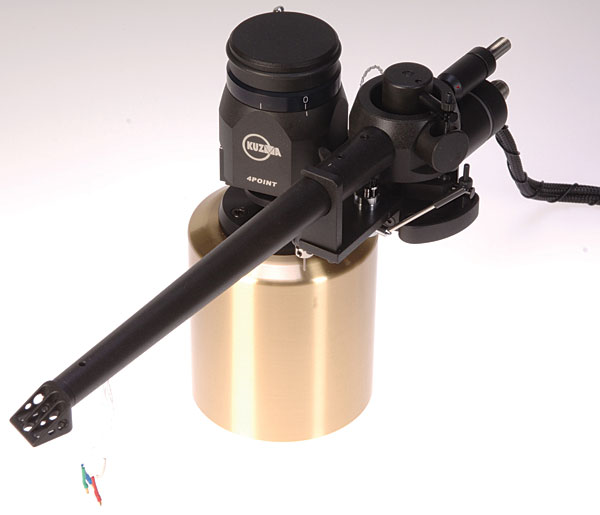
All of these designs look cool and appear to be linear trackers—ie, they maintain a constant tangency to the groove—but few are. Most actually crab their way across the record surface in a series of microscopic arcs that produce more and repeated tracking error than do well-designed and set-up pivoted arms.
Again, unless the bearing is so tight it won't move, the spacing necessary to permit movement in such arms produces fore-and-aft or up-and-down motion, or yaw, along the cantilever's zenith angle—all at microscopic levels invisible to the naked eye.
Tangential-tracking arms have differing horizontal and vertical effective masses, which results in mechanical and thus sonic problems, as does the need to move the tonearm wires across the record surface along with the arm.
In my experience of air-bearing arms, only those that have captured bearings that maintain a uniform pressure around the air gap can truly be called air bearings, and because only they can maintain true tangency to the groove. The others are hovercrafts of one sort or another. Some hovercraft arms can work pretty well and sound good, but I'm not convinced they can maintain true tangency.
Even pressurized air bearings that do maintain tangency have another serious problem: The air has to go from high pressure to the ambient room pressure within a matter of inches, as the pressurized air reaches the annular gaps at the end of the bearing. If you want to imagine what that's like, blow up a balloon and let it go. Consider the balloon's behavior, and imagine what's happening at the gap as the bearing moves across the record surface: the air struggles violently to escape and reach ambient room pressure. To the best of my knowledge, the only captured-air–bearing arm that compensated for this problem was the one on the discontinued System III Sirius turntable, from Andy Payor's Rockport Technologies, and it did so only at great expense.
The Point of the 4Point
Franc Kuzma builds very fine tonearms with all kinds of bearings—fixed-gimbal, unipivot, captured-air—each an accomplished variation on a well-established technology. But in the new 4Point he's come up with something unique: a tonearm that combines the advantages of fixed gimbals and unipivots while appearing to avoid the shortcomings of both.
